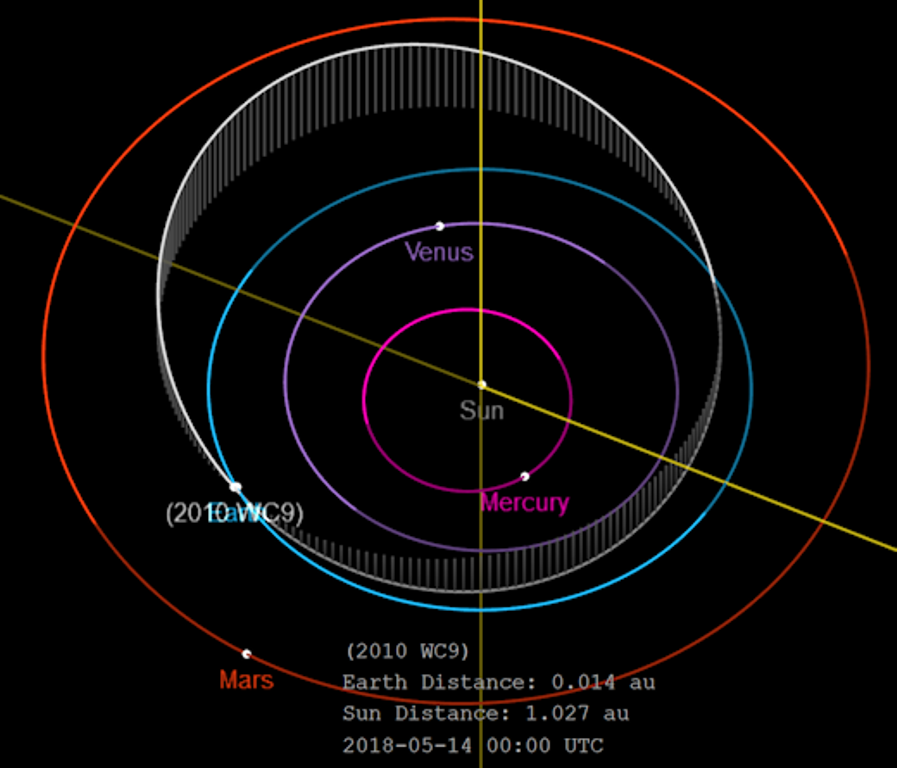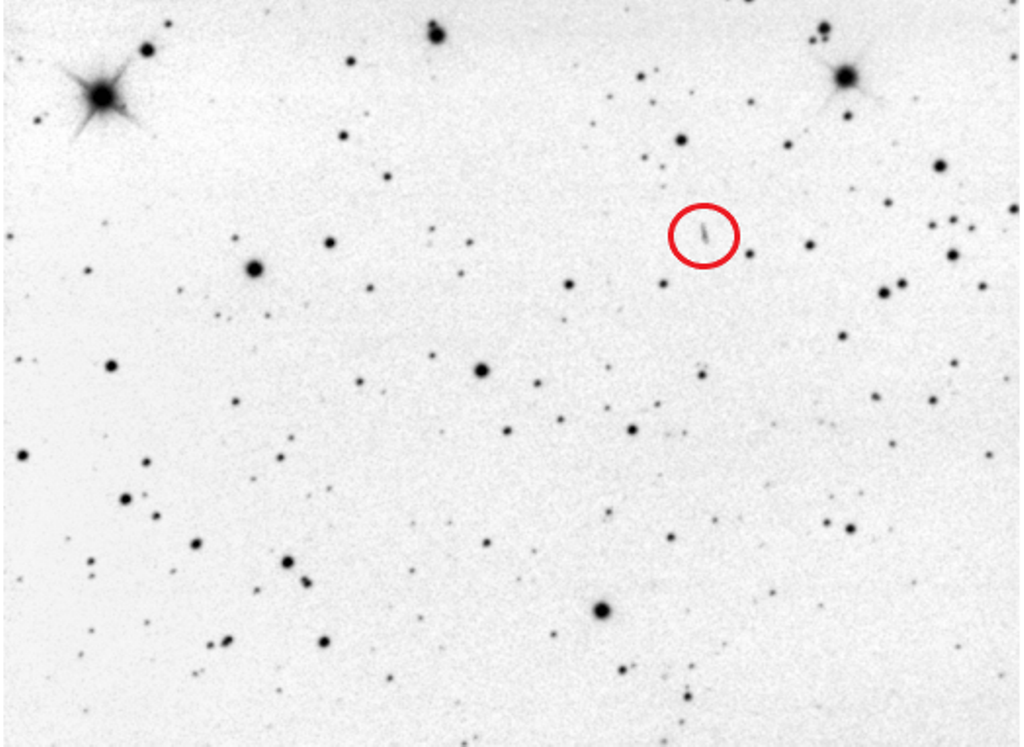"The asteroid moved rapidly through the constellation Hercules shining about as brightly as a 15th magnitude star," says Simmons. "The 'wobbly' appearance of the trail is as a result of slight periodic errors in the telescope mount's gear train. This is not caused by the asteroid tumbling!"
Tonight, the view will improve - a lot. On May 15th, 2010 WC9 will fly through the Earth-Moon system, splitting the distance between our planet and the Moon. At closest approach (203,000 km), the asteroid will glow like an 11th magnitude star (~40 times brighter than shown above) as it races through the southern constellation Pavo (the Peacock).
2010 WC9 is known as the "lost asteroid" because astronomers lost track of it soon after it was discovered in November 2010. The asteroid receded from Earth and didn't return for nearly 8 years... until now.
Estimates of 2010 WC9's size range from 60 m to 130 m wide. This puts it in the class of the Tunguska impactor, which leveled a forest in Siberia in 1908. And it is at least 3 times as large as the Chelyabinsk meteoroid, which exploded in the morning sky over Russia on Feb. 15, 2013, shattering windows and knocking people to the ground.
There's no danger of a collision this time, though. Analysts are certain 2010 WC9 will not hit Earth - neither this week nor in the foreseeable future. New observations of the asteroid in recent days have extended our knowledge of its orbit and eliminated it as a threat for at least the next 100 years.
Comment: That's good to know. Although, it's a little bit disconcerting that they only know this because they just discovered that it's going to miss us... as it is flying by!
2010 WC9 is invisible to the naked eye. Advanced amateur astronomers can photograph it, however, using mid-sized telescopes equipped with low-light video cameras. Southern hemisphere observers are favored, especially those in South Africa and southern parts of South America where the asteroid will be high in the night sky at closest approach.
[ephemeris] [3D orbit]





Reader Comments